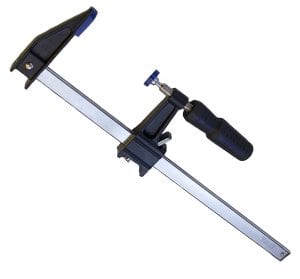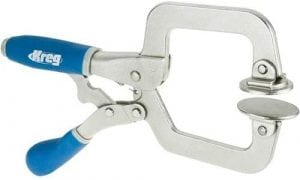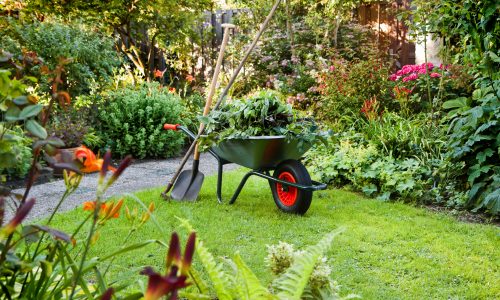The Best Woodworking Clamp
We looked at the top 8 Woodworking Clamps and dug through the reviews from 9 of the most popular review sites including and more. The result is a ranking of the best Woodworking Clamps.

Our Review Process
Don't Waste Your Money is focused on helping you make the best purchasing decision. Our team of experts spends hundreds of hours analyzing, testing, and researching products so you don't have to. Learn more.
Our Picks For The Top Woodworking Clamps
- 1. IRWIN 6-Inch One-Handed Mini Bar Quick Grip Woodworking Clamp, 4-Pack
- 2. Yost Tools F112 12-Inch Woodworking Clamp
- 3. Bessey LM2.004 LM 4-Inch General Purpose Woodworking Clamp
- 4. Kreg KHC-Premium Face Woodworking Clamp
- 5. TEKTON Mini 6-Inch Ratchet Bar Woodworking Clamp
- 6. Jet 70440-2 40-Inch Parallel Woodworking Clamp Set, 2-Pack
- 7. Micro Jig DVC-538K2 Matchfit Dovetail Woodworking Clamp Set, 2-Pack
- 8. Jorgensen 6-Inch Light Duty One-Hand Spreader Bar Clamp Set, 4-Piece
These lightweight, compact clamps are just the thing for hobbyists. The carbon material offers plenty of strength in a small package. The pads have plenty of give and protect the wood while applying a firm hold.
Sturdy Hobby ClampsThese quick-gripping clamps are small but made of a durable material.
Any woodworker will easily be able to use this well-designed tool. The clutch style should be familiar to any handyman and can be adjusted quickly. The extra-wide clamp area makes it suitable for a wide range of projects.
Simple and AdjustableWoodworkers can take on any project with this simple and reliable clamp.
This general purpose clamp is lightweight but can still apply a surprising amount of force. The steel frame is built to last and the wooden adjustment grip is made for easy handling. This one is ideal for jobs with numerous layers.
Strong Gripping ClampThis sturdy, strong clamp can handle multiple layers of wood with consistent pressure.
Rubber handles makes this clamp easy to grip as it does its work. The spring mechanism makes for a consistent grip that is ideal for pocket hole assembly and other tricky jobs. Extra large contact points keep the wood flush while keeping it safe from harm.
Smooth, Effective MechanismThis clamp is both easy to handle and strong.
Buying Guide
Step into any serious woodworker’s shop and you’ll see a wide variety of tools. That’s to be expected. No handyman (or woman) wants to be caught without the right drill bit for an oddly-sized opening, or a saw that can cut at just the right angle. If there’s one item you’d think they would use that is right for every job, it’s the humble woodworking clamp.
And you’d be dead wrong in thinking that, because a woodworker’s clamps are one of the most specialized toolsets they can use — and the most essential. By their basic definition, a clamp’s job is simple: Hold a block of wood in place by clamping it onto a more stable object, like a table. But that’s hardly the only job of a clamp, and it turns out even that simple task requires a lot of variation.
Hence the first step in buying your new set of clamps: Determine the best type for the job at hand.
Let’s start with the smallest jobs. If you’re gluing together relatively thin pieces of wood or securing edging material onto a panel, you want a reliable set of spring clamps. These simple clamps look and operate just like giant clothespins, and they’re great when you need a quick hold. They won’t have the grip or width you need for securing large planks or blocks, but for light work, there’s nothing handier.
The most common clamp in a woodworker’s arsenal is the bar clamp, which can encompass a lot of different styles. For tasks where you need a quick hold, there’s nothing like a trigger bar clamp, also known as a pistol grip clamp. The particular advantage of this tool is it can be used one-handed. Just get your pieces in position, put the clamp in place and pull the trigger as many times as you need. Each pump will ratchet the pads closer together until you’ve got a secure fit. They typically come with a release lever that can instantly break the tension.
A more common type of bar clamp is the F-style, named because of the shape of its profile. These old-school clamps come in a variety of designs, but they generally require the turn of a screw handle to tighten the pads. It’s not as easy to do as a trigger clamp, but the hold will usually be tighter. The width will definitely be an advantage, as F-style clamps can be adjusted from an inch or less out to a few feet. This makes them one of the most versatile clamps, able to secure multiple pieces of wood together or even fasten sanders and other tools directly to a workbench.
For really large jobs like cabinet assembly or work that takes up an entire tabletop, you’ll need clamps with jaws that can open several feet wide — and still remain stable. That’s the primary specialty of parallel jaw clamps. They feature two jaws that slide on a long bar, both of which remain fixed to the bar at a 90-degree angle. Alternatively, you can pick up a good set of pipe clamps. These have jaws that secure with a turnkey and can fit over any standard length of piping. That lets you make them as wide as the job requires. Sometimes they are even sold completely separate from the pipe, in which case you’ll have to check that your workshop has a compatible length of pipe handy.
For jobs that require a little spatial creativity, there’s the handscrew clamp. This clamp with its two thick wooden jaws looks like something of an antique, but it is a staple in every serious woodworker’s tool kit. The loose way the jaws are held together by their long screws allows them to clamp together pieces that are tapered, offset or just at an odd angle to one another.
There are certainly other types of clamps, but that list covers the main general types. Whichever type you use, you’ll want to consider the amount of force it can apply. At the same time, give the pads a look. Too much force can leave unwanted impressions in the wood, but padded jaws can mitigate that.
Why we recommend these woodworking clamps?
Products Considered
Products Analyzed
Expert Reviews Included
User Opinions Analyzed
Our experts reviewed the top 8 Woodworking Clamps and also dug through the reviews from 9 of the most popular review sites including and more. The result is a ranking of the best of the best Woodworking Clamps.
DWYM is your trusted roduct review source. Our team reviews thousands of product reviews from the trusted top experts and combines them into one easy-to-understand score. Learn more.
What to Look For
Use the right clamps, but use them correctly. You don’t want to apply more force than you need, especially if you’re working with “soft” woods or other material that clamps can leave an impression on. For bigger jobs that require multiple clamps, consider alternating their placement so the force of the clamps doesn’t pull or twist your project to one side. Apply your first clamp right side up, the next one upside down, etcetera.
More to Explore
We’ve got the ancient Egyptians to thank for innovations in many fields of art and science, and woodworking is no exception. The first Egyptian woodworkers were using tools such as bow drills, chisels and pull saws earlier than 3000 B.C. Archaeologists also found the world’s oldest piece of plywood — that homebuilding staple — lining an Egyptian coffin.






















